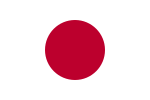
Back Historiografía japonesa Spanish Historiographie du Japon French Storiografia giapponese Italian 日本史学史 Japanese Historiografia do Japão Portuguese 日本史学 Chinese
| Part of a series on the |
| Culture of Japan |
|---|
 |
The historiography of Japan (日本史学史 Nihon shigakushi) is the study of methods and hypotheses formulated in the study and literature of the history of Japan.
The earliest work of Japanese history is attributed to Prince Shōtoku, who is said to have written the Tennōki and the Kokki in 620 CE. The earliest extant work is the Kojiki of 712. The Nihon Shoki followed by 720. These two works formed the base of a history of the nation based in great part on Japanese mythology, in particular that of the Shinto religion. The works were inspired by Chinese historiography and were compiled with the support of the Japanese state. Five more works between 797 and 901 completed what had begun with the Nihon Shoki; the six are known as the Rikkokushi ("six national histories").
An abandonment of Chinese inspiration and state support marks the historiographical writings of the period from the 9th to 16th centuries. A great number of historical tales called rekishi monogatari and war tales called gunki monogatari appeared, and works such as the shikyō "four mirrors" of the 12th to 14th centuries and The Tale of the Heike of 1371 enjoyed widespread popularity. Other art forms such as Noh theatre and emaki scrolls added to these written works.
Neo-Confucian schools became preeminent at the beginning of the Edo period (1603–1868). They brought a methodology very critical of works such as the Kojiki, but did not contradict the Mandate of Heaven. The most prominent representatives of this are the Hayashi clan and the Mitogaku school. The nativist kokugaku school, inspired by Shinto, returned in the 18th century, driven by the work of Motoori Norinaga. It opposed the Neo-Confucians by seeking to demonstrate the veracity of Shinto mythology, especially of the Age of the Gods and the early emperors, whose existence is doubted.
Japanese historiography opened to Western influences at the end of the 18th century. Rangaku ("Dutch learning"), translations of European works in the mid-19th century, and then the introduction of German historiography of Ludwig Riess in 1887 brought new analytical tools to the various Japanese schools of history. During the period of the Empire of Japan (1868–1947), historians questioned, at the peril of their academic freedom, one of the ideological foundations of the new regime: the place of national myths in the national history.
Marxist ideas were introduced in the 1920s and renewed in the post-World War II period with the work of Hisao Ōtsuka. Themes and research diversified from the 1970s, soon accompanied by a resurgence of conservative and nationalist approaches.